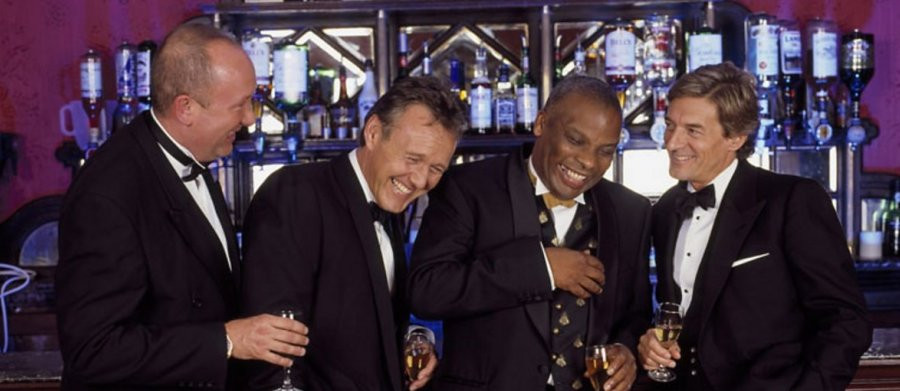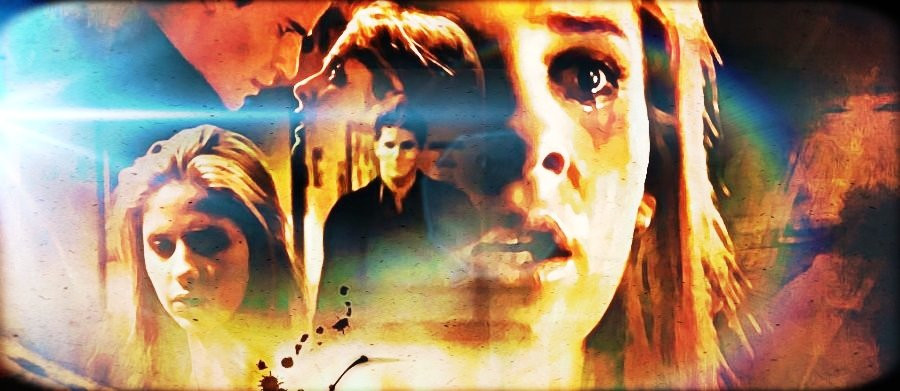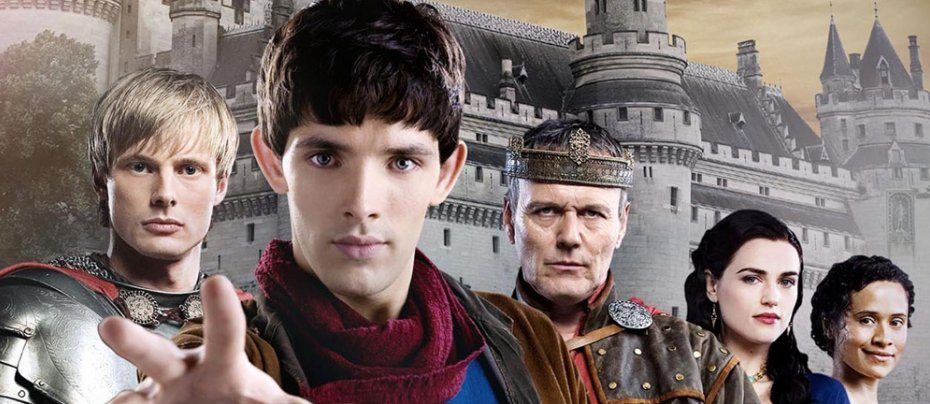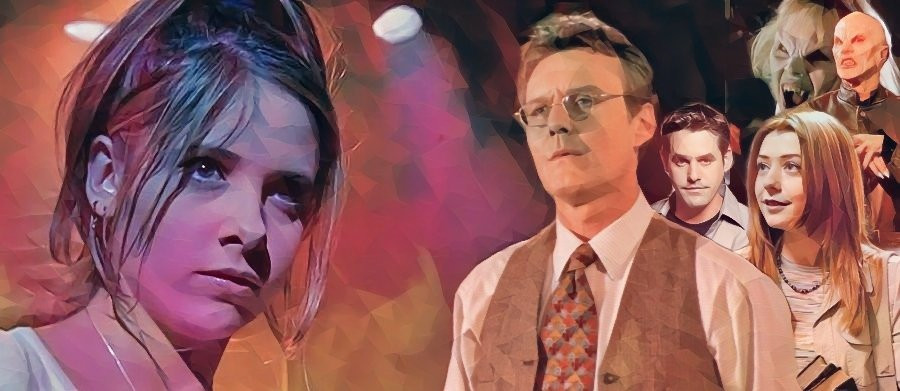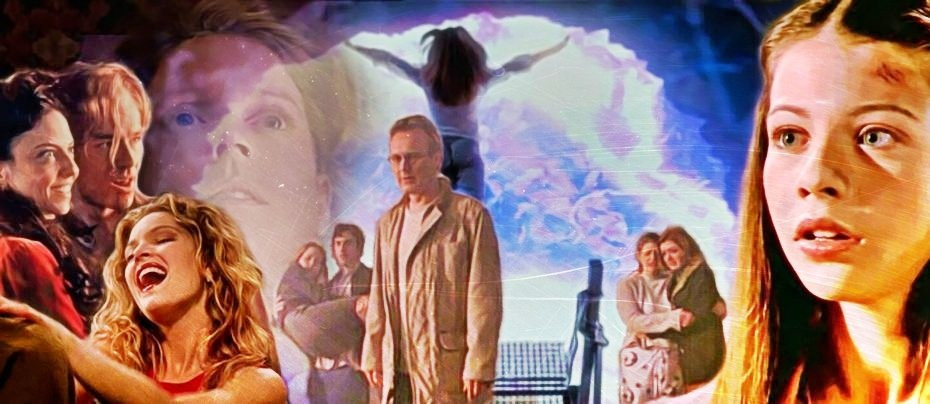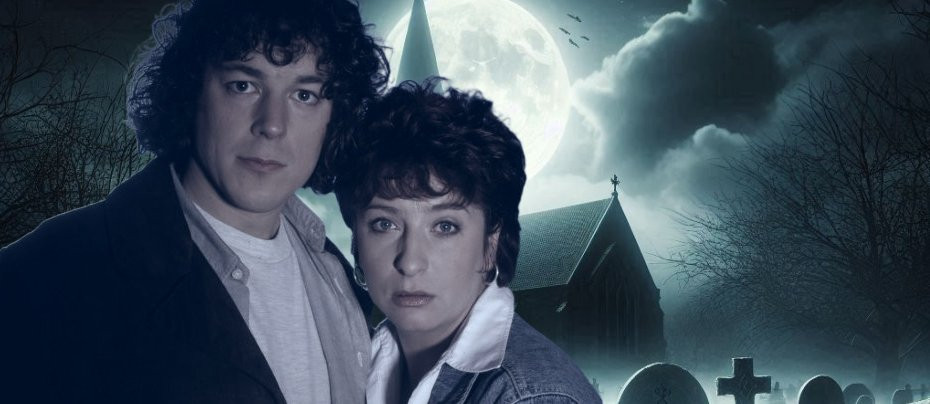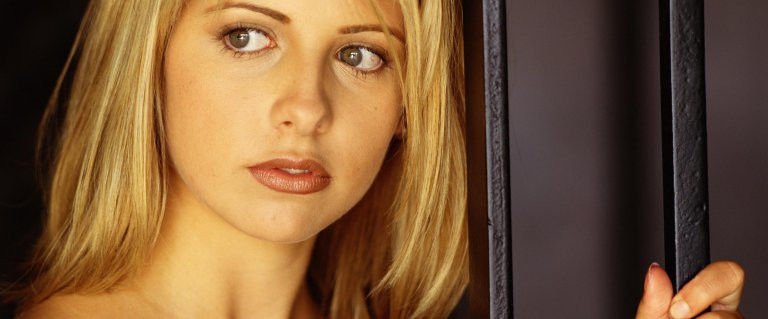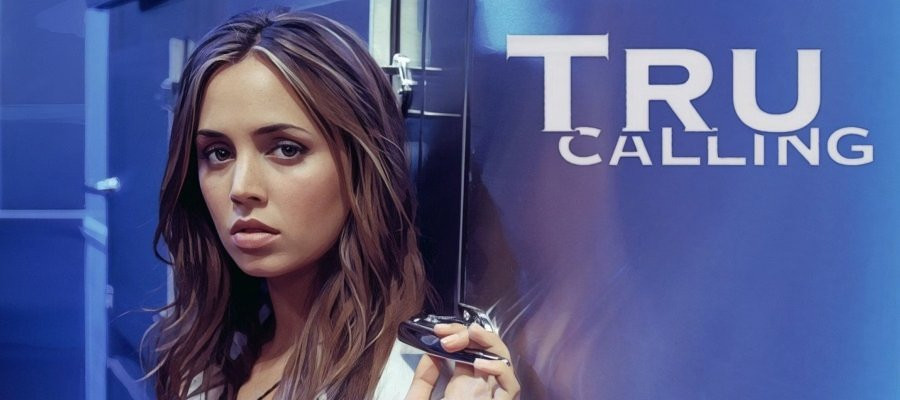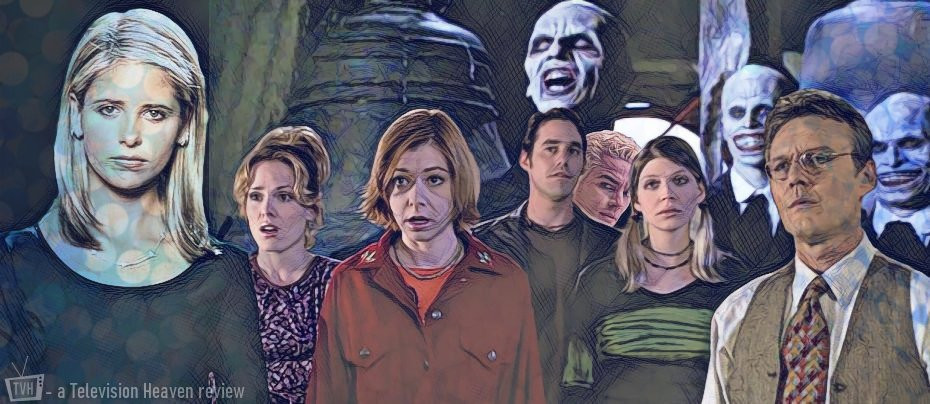
Buffy the Vampire Slayer - Season 4
Buffy the Vampire Slayer – season four (1999-2000) review by Daniel Tessier
Buffy's fourth season saw the show growing up. Buffy and her friends moved on from high school and into the next phase of their lives, with more complex relationships and more adult concerns in turn. At the same time, Buffy had become a big enough hit to receive its own spin-off series – Angel, a star vehicle for David Boreanaz as the eponymous vampire with a soul. This series (covered in its own review) was more adult-oriented still, marking a step forward in maturity for the entire franchise. Both shows aired on the same network – The WB – in the States, allowing longer-running serialised storylines that could play over both series. (In the UK and many other territories, this was scuppered by competing channels picking up the programmes with no attempt to run them alongside each other.)
While the main cast had varied during the first three years, season four saw the biggest changes to the core characters. Angel, of course, left to star in his own show, but so had Cordelia and Wesley, and while the latter's absence made little difference to Buffy, Cordelia had been a fundamental part of the show. Now that the characters had moved on from high school, however, she no longer had a place in the show's structure, leading to her reworking for Angel. Seth Green's Oz, who had been a regular since season two, bowed out partway through this season, while Emma Caulfield's Anya became a recurring character attached to Xander.
Kristine Sutherland, who as Buffy's mum Joyce had been an essential part of the series so far, had her role greatly reduced, while new love interests were brought in for the regulars: Marc Blucas as Riley Finn, and Amber Benson as Tara Maclay. (Neither Benson nor Caufield were yet given regular status and main titles credits, in spite of being significant additions to the cast.) Finally, in the absence of Angel, Spike was brought back to become a regular, with James Marsters continuing as a core cast member right to the end of the series itself.
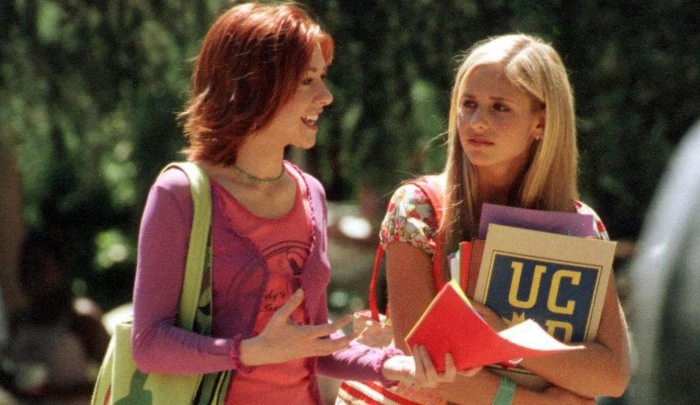
The season saw Buffy (Sarah Michelle Gellar) and Willow (Alyson Hannigan) enrol in UC Sunnydale, beginning their time in college. The transitional nature of this time – not quite school, not quite adulthood – is a perfect example of the process of growing up. Meanwhile, Xander (Nicholas Brendon) took the opposite route, attempting to make his way in the wide world of work. Buffy's former Watcher, Giles (Anthony Stewart Head) became an oddity: still a central part of the show, but with no official role in Buffy's life, something which left his character in emotional freefall. In their own ways, the characters were all taught a lesson: high school might be hell, but the real world is worse.
Joss Whedon, although continuing as showrunner and executive producer, wrote and directed fewer episodes than previously due to commitments on Angel, which included the opening and closing episodes, 4.10, the acclaimed “Hush,” and 4.16, “Who Are You.” In his stead, Marti Noxon became supervising producer and increased her involvement in scripts, Jane Espenson was promoted to co-producer, and freelancer David Fury was brought in as regular writer and producer. Finally, Tracey Forbes (Spider-Man: The New Animated Series) was brought on as an additional staff writer.
Perhaps due to Whedon's lesser involvement in the scripting side, season four doesn't quite live up to the impressive standards of the previous two seasons. (Although, by many accounts, this didn't stop him throwing his weight around behind-the-scenes.) The season doesn't hold together as well as most others; as the characters struggle to find their way, so does the series, adapting slowly to an altered set-up. Buffy, in a new environment, is back undercover (although it's questionable how many students at the college won't know her secret, having come straight from Sunnydale High), but the college setting is one that the series never quite manages to make work in the same way as high school did. Nonetheless, the season does boast some excellent episodes, including one often voted the very best of the series.
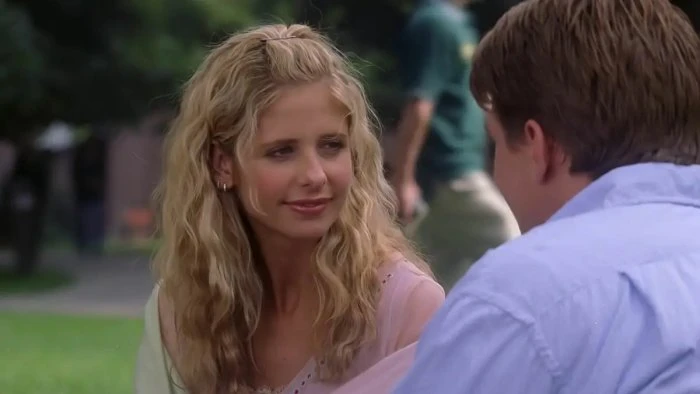
The season kicks off with a winner. “The Freshman” sees Buffy struggling to adjust to her new college. Dagney Kerr (Desperate Housewives) is introduced as her perky but irritating roommate Kathy; Buffy has an awkward and humiliating first encounter with Riley; and even Willow doesn't seem to have much time for her. Buffy does make a new friend, hitting it off with shy, poetry-loving student Eddie – an early role for Pedro Balmaceda, better known now as superstar Pedro Pascal (The Mandalorian, Game of Thrones, Narcos).
Eddie is very quickly killed and turned into a vampire by a gang of campus vamps, who pick off the weakest members of the new intake every year, clearing out their rooms to make it look like they've bailed overnight. They're led by Sunday, a painstakingly cool vampiress who singles out Buffy for their next assault. The vamps clear out her room in advance, unsettling her further; meanwhile neither her mother nor Giles offer much support when she comes rushing back in the first week. Sunday manages to best Buffy in their first encounter, injuring her and savaging her fashion sense (which is wholly uncalled for – Buffy's hippy-ish college look is a triumph, just one example of some exceptional costume designs this season).
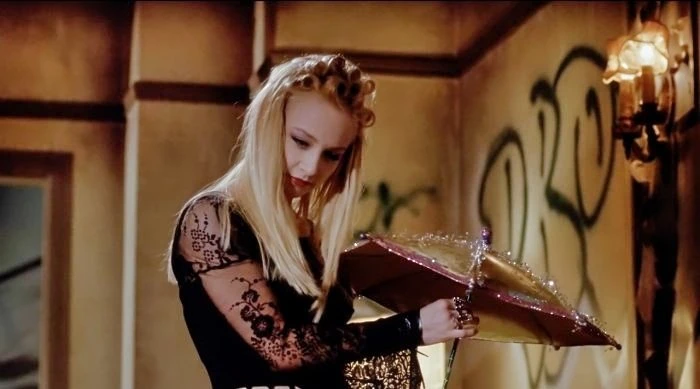
It's a strong opener, maintained by a very sympathetic performance by Gellar, and an absolute star turn by Katherine Towne (Evolution, What Lies Beneath) as the vindictive vamp Sunday. Naturally, Buffy regroups, even as her friends finally work to come to her rescue, and beats Sunday and her minions, taking back some control of her life. The episode sets up various new characters and elements, some of which never really go anywhere, such as Phina Oruche (Footballer's Wives) as Giles's gorgeous but seldom-seen girlfriend Olivia; others which become very significant indeed.
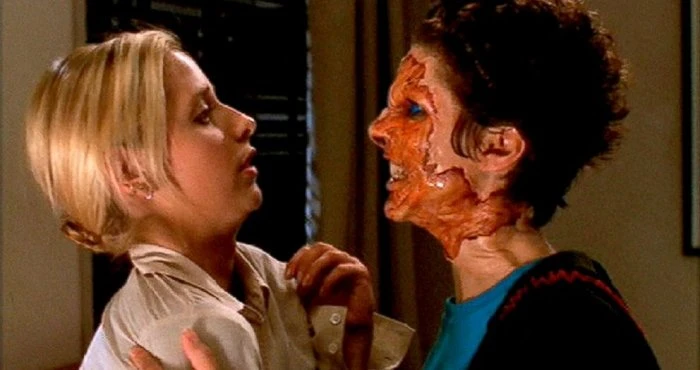
Episode two is the equally great “Living Conditions,” which sees Buffy utterly failing to cope with sharing a room with Kathy. Kathy, who plays Cher all day long and labels her eggs, would be a trying roommate for anyone, but then, she does have to deal with someone who randomly goes out in the middle of the night and comes back in the early hours, carrying a bag full of sharp sticks. Kathy's relentless chirpiness begins to break down as she and Buffy clash. Dagney Kerr's performance as Kathy is brilliant, and Gellar is hilarious as Buffy becomes more and more unhinged. When it starts to look like Buffy is just showing her true, intolerant colours, it turns out that Kathy is a sinewy, glowing-eyed demon who's on the run from her overbearing father, and has been stealing Buffy's soul during her sleep so she can pass as human. Not that Buffy seems much more tolerant when Willow finally moves in...
4.3, “The Harsh Light of Day,” kick starts the romance aspect of the season. Following their unlikely prom date in season three, ex-vengeance demon Anya returns to Xander, having become besotted with him and intending to sleep with him to get him out of her system. This is the start of their relationship, and of Anya's spectacularly blunt personality and frank attitude to sex. Caulfield is utterly brilliant as the perfected Anya character, who remains on the series until its end, providing an uncompromising commentary on the various characters and their relationships. Buffy, meanwhile, falls for charming player Parker Abrams, played by the suitably handsome Adam Kaufman (Taken, Crazy Ex-Girlfriend). Parker seduces Buffy and then moves on to the next girl, leaving her devastated (although you have to wonder what she thought she was likely to be getting into in a freshman college romance). Parker is easily the most hated character in the entirety of Buffy, and, even though he's a cad and a creep, he's hardly comparable to the various murderers, torturers and megalomaniacs who have populated the show. Yet he continues to rate as the most hiss-worthy “villain” in the series.
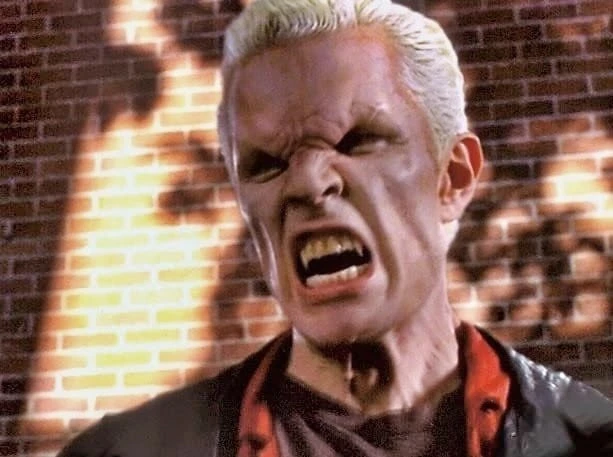
Also notable in the episode, and the main action plotline, is the return of Spike, albeit just for one episode for now. Being a murderer, torturer and worse, Spike should be a hated villain, but the unending popularity of the character and James Marsters meant that he was never going to be away for long. He has returned to Sunnydale, having been dumped Drusilla once again, in search of the legendary Gem of Amarra, which renders a vampire immune to sunlight, impervious to stakes and essentially indestructible. He's also hooked up with none other than Harmony Kendall (Mercedes McNab), revealed to have been transformed into a vampire in the climactic battle that ended season three. Harmony proves to be exactly the same as a vampire, just with fangs, and is so hopeless at the whole (after) lifestyle it's pretty adorable.
Buffy, naturally, defeats Spike and retrieves the Gem from him, sending it with Oz to deliver to Angel (followed up immediately in Angel 1.3, “In the Dark). Spike will be back before long, this time for good. The episode ends with Buffy, Harmony and Anya all heartbroken, but at least we know that two of them will find love this season. Buffy also gets her own back on Parker in the otherwise risible 4.5, “Beer Bad,” but before that is the much more effective “Fear, Itself,” the semi-traditional Hallowe'en episode.

If anything, “Fear, Itself” is a follow-up to season one's “Nightmares,” similarly seeing the gang's fears manifested but in the process showing how much they've grown and changed. Trapped in a haunted house-themed Hallowe'en party where even the decorations have come to life thanks to a foolish use of genuine demonography, Buffy, Willow, Xander and Oz are each dissected in an effective character study. Buffy is being weighed down by responsibility, feeling she has to shoulder the burden of being the Slayer and can't rely on the others, while Xander has a more literal reaction to feeling that he is being ignored by his friends now they've gone to college: he becomes invisible and intangible. Willow tries to use a minor magical spell to guide them, which runs wildly out of control and attacks her, while Oz's own fears of self-control manifest when he begins to transform into his werewolf self without warning.
While the gang mostly have to face their fears in reality later in the season, Willow's loss of magical control sows the seeds of a much longer-term storyline that will come to explosive fruition in the sixth season. The episode also features a hilarious final twist, Giles wielding a chainsaw and Anya, in what's really the start of her relationship with Xander, dressed as a fluffy bunny for Hallowe'en because she, the 1100-year-old demon of vengeance, is terrified of rabbits.

4.6, “Wild at Heart,” brings Oz's story to a sudden stop. “Beer Bad” had introduced the charmingly-named Veruca, singer with one of the many bands that seem to inhabit Sunnydale, with whom Oz finds an immediate attraction and rapport. Played by Paige Moss (Beverly Hills 90210), Veruca is supposed to be irresistibly sexy and with a dominating presence, but frankly I don't see what all the fuss is about. She mostly just slinks around with her mouth open. Veruca and Oz's undeniable attraction is due to, of course, her being a werewolf as well. This was intended as a major storyline that would have run the course of the season, with Oz and Willow's relationship being out to the test, but Seth Green's developing film career and commitment to Family Guy meant that he suddenly made the decision to leave the show, necessitating a much shorter plotline. Oz and the far-more-dangerous Veruca, then, almost immediately... I suppose “mate” is the word... before wolf-Oz is forced to kill wolf-Veruca when she threatens Willow.
Unable to fully control his werewolf urges, Oz takes off to travel the world and find ways to subdue the beast. Oz returns for his final full appearance in 4.19, “New Moon Rising,” having travelled to Tibet, studied with yogis, and found a regimen of herbs and meditation that allows him to suppress the wolf, even during a full moon. Of course, Oz has always been the most repressed character in the series, very rarely expressing any emotion on the surface, so that when he does react, it's all the more serious. The werewolf is a strong allegory for the tendency of men to try to quash their emotions, only for them to explode out violently (the British series Being Human having a more recent and more powerful exploration of the same idea). It becomes clear that Oz can't control his feelings around Willow, transforming again when he returns and discovers that Willow has been seeing someone new.
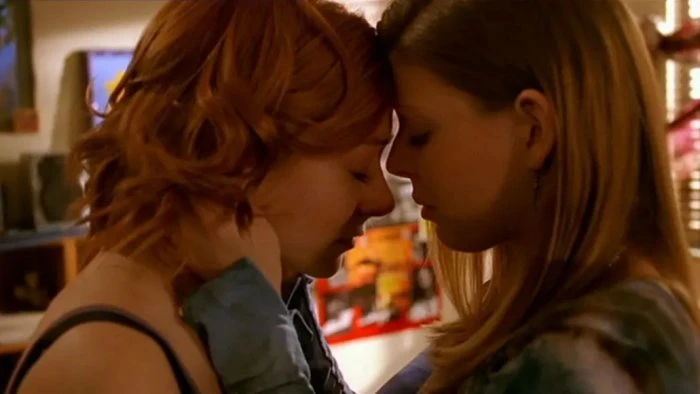
This someone new is Tara, played by Amber Benson (known then for films such as King of the Hill and The Crush). Nervous, shy and unconfident, Tara is an aspiring witch attending UC Sunnydale. Although to begin with Benson slightly overplayed Tara's nerves and muddled words, she rapidly developed the character into a sweet, compassionate, and emotionally intelligent individual, by far the most mature of the Scooby Gang. Benson and Hannigan develop a strong chemistry, as Tara and Willow's relationship slowly moves from nervous friendship to romance. Indeed, their chemistry on the characters' first meeting in 4.10, “Hush,” persuaded Whedon to rework their relationship as explicitly romantic.
That said, airing a lesbian romance on prime-time American TV was a hard sell at the end of the twentieth century. Notably behind in such depictions than the UK and much of Europe, the same-sex relationship drew inevitable complaints from some corners of the viewership. With The WB enforcing censorship on how much they could show (note that we don't see the characters kiss once in the whole season), the use of magic and witchcraft was used to allegorically show their romance, with spells cast together by the characters in close physical contact. While Willow has the harder time on screen, having to come to terms with her sexuality and the uncertain attitudes of her friends, it was Benson who dealt with the worst behind the scenes. As well as being on the receiving end of much of Whedon's bullying ways, she was bad-mouthed by fans and the press for being fat, something she was and is very far from being. Although her casting was lauded by some for showing a more natural and average-looking woman, being noticeably larger than her very thin co-stars saw Benson singled out for abusive comments by the shallower viewers and critics. One can only imagine the outcry if they had cast someone actually overweight.
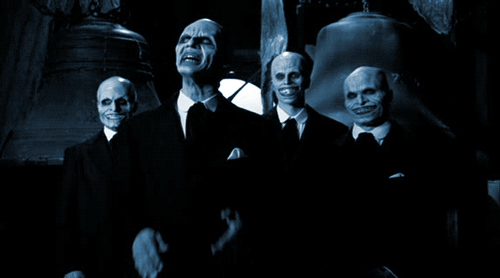
The aforementioned “Hush” stands out as one of the best and most popular episodes of the entire series. Written and directed by Whedon as a challenge to himself, the normally very verbose series is reworked into something that's verging on a silent movie for much of its runtime. The 45-minute episode features only seventeen minutes of dialogue, with events and emotions portrayed through skilled physical acting, music and excellent camerawork by Michael Gershman. The core cast are all excellent, but in an episode that's such a visual experience, we have to draw attention to the monsters-of-the-week. The Gentlemen, gaunt, deathly pale bogeymen who float around Sunnydale, silently applauding each other as they rip the hearts from their victims, are one of the series' most memorable monsters. While there are several, legendary creature actor Doug Jones (Star Trek: Discovery, Hellboy, Pan's Labyrinth) stands out, as does Camden Toy, making his first of several appearances in the franchise. The make-up on the Gentlemen is chilling, but Jones and Toy are even more frightening leading the group with less make-up than their fellows, maintaining a hideous rictus grin throughout. However, somehow even more unsettling are the Gentlemen's hideous henchmen, disfigured creatures in straight-jackets who flap helplessly as they follow their masters. Buffy eventually defeats the Gentlemen by breaking their spell of silence and screaming, killing them all, in a fun inversion of the usual screaming horror heroine that Buffy has always sent up.
“Hush” is also a major step forward in Buffy's relationship with Riley Finn, a plotline that has moved only gradually from their first meeting in the season opener. It's become standard to dislike Riley, dismissing him as the boring boyfriend, especially since he is the only one of Buffy's serious, long-term love interests who isn't a tormented vampire. However, I've come to like former basketball star Marc Blucas (Underground, Necessary Roughness) in his role as the big, straight-cut farm-boy from Iowa. Designed to be the complete opposite of Angel, Riley is optimistic, reliable, a little too trusting, and old-fashioned rather than literally old. He is a student teacher for UC Sunnydale's psychology department, which does raise the question of how above-board his relationship with Buffy is.
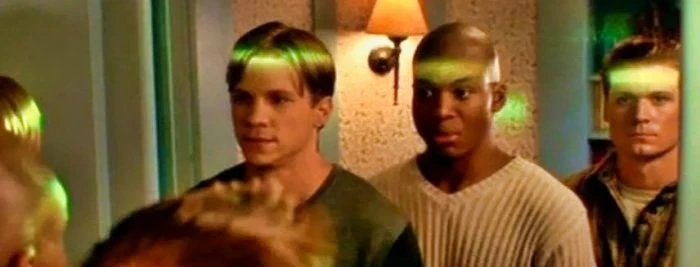
Of course, no one can simply be a nice guy in Buffy, and Riley has his own secrets. Throughout the season so far, a mysterious military force has been spotted, operating around Sunnydale after dark, hunting and capturing the various demons and monsters that haunt the Hellmouth. Riley is revealed to be a high-ranking part of this team, the Initiative, along with his two best buddy jocks: Forrest (Leonard Roberts), a chauvinistic pretty boy who is blatantly in love with Riley; and Graham (Bailey Chase), a soldier hewn from pure wood.
In episode 4.7, “The Initiative,” the eponymous military project is put in focus, while Riley suddenly realises that he has a thing for that strange new student who's always out late at night. We discover that the Initiative is keeping all manner of demons – or “Hostile Subterraneans” – in a secret base beneath the university, locked in glass cages to be experimented upon for undisclosed but clearly nefarious purposes. The multiple monsters kept in what are essentially display cases seems to be a visual nod to collecting action figures or minifigs, something that many a Buffy fan would be into. The idea would be returned to, with a higher budget but similar visual, in Whedon's 2011 horror comedy film The Cabin in the Woods. The leader of the Initiative is revealed as none other than Professor Maggie Walsh, Buffy's intimidating psychology lecturer. Played by Lindsay Crouse (All the President's Men, Traps, Dragnet) with icy coldness, Walsh is a brilliant antagonist because she makes her ruthless actions sound so reasonable. She's very much a character you love to hate, down to her disturbing mothering of her soldier boys and her utter untrustworthiness.
There's more to the Initiative's plans than just capturing monsters and seeing what makes them tick. For a start, they first need to render them safe to deal with, so they drug them and implant them with computer chips that incapacitate them with pain when they try to hurt a living being. This is what happens to Spike, who swans back into Sunnydale vowing vengeance on Buffy, only to immediately get tasered, locked up and neutered. He escapes, but discovers his new status when he tries to attack Willow, in one of the season's funniest scenes. (“This has never happened before.” “We can try again later...”)
Bringing Spike back was inevitable. James Marsters had been hugely popular with audiences, leading to his character becoming a major foe for the second season instead of being killed off, then being brought back for brief reappearances before he finally became a regular with “The Initiative.” Whedon was by all accounts against this, reportedly becoming aggressive with Marsters and threatening to kick him off the show, in spite of executive instruction to keep him on due to his popularity. A character that had been designed as a fun but relatively minor villain became seen as a romantic antihero, and Whedon clearly capitulated and worked out a way to keep him around for good.
Naturally, a character who had vowed to murder the series lead wouldn't work indefinitely; he would, sooner or later, have to either be successful or killed off himself. So instead, Spike was blocked, unable to harm Buffy or any other human being, but still, crucially, able to harm other demons. This let Spike remain antagonistic, while being entertainingly violent to expendable monsters and gradually become a reluctant ally to the Scoobies. To begin with, Spike's alliance was purely due to desperation; unable to kill to feed, he offered information on the Initiative in return for blood and shelter (initially in Giles's flat, the all-purpose base for the characters, and later in Xander's basement home). Once he realised he could kill demons, Spike enjoyed helping the good guys' fight purely as a way to sate his bloodlust, and would occasionally give them information for money. While it was true to Spike's self-serving ways, it began his slow transformation from horror to hero, a journey that would run through the rest of the series.
The Initiative's machinations continue throughout the season, with Spike, aka “Hostile-17,” trying hard to remain out-of-sight of the soldier boys. While the overarching plot continues, there are several memorable standalone adventures, which include some of the best episodes in the series' history.
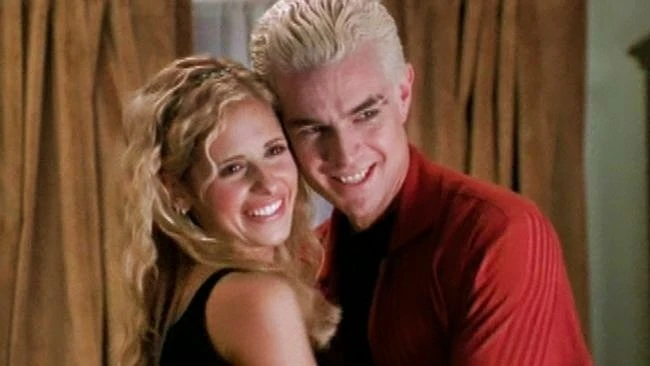
4.9, “Something Blue,” sees a depressed Willow, still reeling from Oz's departure, experimenting with magic in an attempt to take away her heartache. Fluffing a spell to have her will be done, she begins inadvertently casting her wishes on her friends. Giles is rendered blind just because Willow objects to him saying “I see how it feels like that,” while her mockery of Xander's love history leads to his becoming a literal demon magnet. (In defence of Willow, his past love interests have included a giant praying mantis, an Inca mummy girl and now an ex-vengeance demon, so it's a fair thing to call him.) More hilarious is her off-hand remark that Buffy should just “go marry” Spike if she's so concerned about what he's up to, causing the vampire and the Slayer to fall hopelessly, nauseatingly in love. It's a brilliant comedy episode with some absolutely top-notch performances from the regulars, but also works as a portent of things to come. Not only will Spike and Buffy's relationship be moving down the romance route in the not-too-distant future, but Willow's chaotic spellcasting foreshadows her own turn to the dark side in the sixth season. She even receives an offer from the demon D'Hoffryn (a charmingly camp Andy Umberger – The Young and the Restless) to turn her into a vengeance demon – effectively offering Willow Anya's old job.
4.12, “A New Man,” is a favourite, featuring the final appearance of Robin Sachs as Ethan Rayne, returned once more to hassle Giles. The former Watcher, having found himself unemployed, needed less and less by Buffy and at an altogether loose end, finally hits his low point when he meets Professor Walsh, who dismisses his role in Buffy's life. “She called me an absent father figure,” he laments to Ethan, over a tense drink where Ethan warns Giles of something called “3-14” which has all the local demons spooked. Giles wakes up in the morning with an especially bad hangover: Ethan has transformed him into a lumbering, reptilian Fyarl Demon, unable to speak in anything but grunts and growls and filled with an increasing urge to destroy. It's a wonderful chance to see Tony Head really play it up, managing well when enveloped in the series' always impressive monster make-up. After a little assistance from Spike – who happens to speak Fyarl – Giles is almost staked by Buffy, who recognises his eyes at the last minute.
This was one of the screen last roles for the prolific Sachs. Aside from some late career appearances in series such as Alias, Star Trek: Voyager and Torchwood, Sachs mostly had voiceover roles after this, mainly in video games. These included the final appearance of Ethan in the 2003 game Buffy the Vampire Slayer: Chaos Bleeds, which is set during season five. Sadly, Sachs died from a heart attack in 2013, aged sixty-one.
Another unforgettable comedy episode is 4.17, “Superstar,” featuring Danny Strong as short, perpetually unpopular Jonathan Leverson. Tired of being overlooked, Jonathan has cast a spell that has altered reality, making him into a dashing, wealthy Renaissance man, who adorns swimwear calendars and stars in hit movies. Adored by everyone, he's an essential part of the Scooby Gang, while Buffy's something of a klutz. Both she and the Initiative need his help on their missions. Before long, a vicious monster appears, attacking innocents but somehow linked to Jonathan's own strength. (In spite of being a generic threat, it's actually one of the most disquieting monsters in the series, thanks to its unsettling proportions, including bizarrely long, club-like arms.) Buffy learns to believe in herself and defeats the monster with Jonathan's help, returning the world to normal. The episode revolves around an absolutely brilliant performance by Strong, who totally convinces in his charming, super-confident guise, and is another episode that foreshadows future developments. The best part is the revised title sequence, filled with specially-taken shots of Jonathan in heroic poses, although the showrunners missed a trick by not adding Strong to the title credits.
Some episodes are solid but don't quite hit home. 4.8, “Pangs” is an interesting take on the traditional Thanksgiving episode. While Buffy and co. convene around Giles's for a friends-as-family Thanksgiving dinner, the discovery of an abandoned mission building buried beneath the town unleashes Hus (Tod Thawley), a spirit of vengeance for the Chumash tribe. Hus, the figurehead of a spiritual force of vengeful ghosts, is out to wreak havoc on the descendants of those who massacred his people. The script spends a lot of time debating the rights and wrongs of whether Hus has a just cause to fight, and whether it's right to fight back. Willow is firmly on the side of the Native Americans, arguing that they should try to appease the spirit, while Giles, a more old-fashioned sort, argues that whatever the rights and wrong of the past they have to stop him. Spike, seeking shelter with the Scoobies, surprisingly has the most insightful thing to say: “You exterminated his people. What could you possibly say to make him feel better?” While it's trying to say profound things about the blood-soaked roots of the Thanksgiving tradition and the foundation of the United States, the episode is too comedic and too unwilling to take a side to quite carry it off.
It does, however, have some excellent Xander material, as he, in his new job in construction (actually a major development for the character and the beginnings of his finding his place in the town) is the first to discover the mission, and is infected with syphilis as the spirits' vengeance for the plagues brought by the white settlers. Oddly, the episode also features David Boreanaz as Angel, in his first reappearance since he got his own series. Following a vision warning Buffy is in danger (seen in Angel 1.7), he spends his time hiding in the shadows, talking to everyone but her and trying to fight without her clocking him. It's an oddity, designed purely to get Buffy to then follow him back to his own show.

Another unusual one is 4.18 “Where the Wild Things Are,” a ghost story which sees the series again focusing heavily on sex. This is an important part of the show's growing up with its characters, but this episode is really about sex in a way no earlier ones have been. Previously, whether straightforwardly or metaphorically, sex has been an element of the characters' stories, rather than the driving force of the plot. Here, a frat party (they should really stop holding those) becomes sexually-charged, before turning into a chaotic nightmare. Buffy and Riley, in the passionate throes of their new relationship, are upstairs going for it, which has awoken a pack of poltergeists that are now wreaking havoc. Giles, Xander and Anya (the latter two working through their own relationship issues) discover the frat house was once an orphanage and confront the elderly woman who ran it. A devout Christian, she viciously abused the boys and girls in her care for whatever she perceived as “sins of the flesh.”
It's an interesting take on the poltergeist concept, which has been historically linked to adolescent trauma. It's good to see the franchise taking a positive stance on sex as part of life; it could be a bit puritanical in this period, with both “Beer Bad” and Angel 1.12 “Expecting” demonising casual sex (quite literally), and of course Angel's entire storyline being based on negative consequences of sex. It's an interesting episode more than an entertaining one, although it does feature Tony Head finally getting to sing, as the gang discover his secret life as a lounge singer at a coffee shop when they go to him for help.
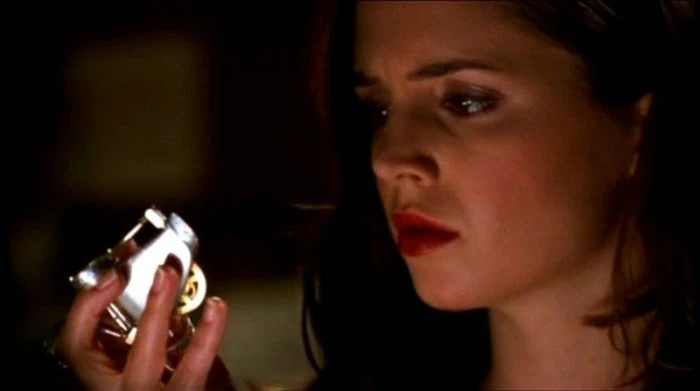
There's a strong two-parter in 4.16, “This Year's Girl” and 4.17 “Who Are You.” Eliza Dushku returns as Faith, waking up from ten months in a coma following her climactic fight with Buffy in the finale of season three. Faith beats her way out of the hospital – escaping into the rain in a shot that is a direct lift from The Shawshank Redemption – before going to confront Buffy. The Mayor has left a video for Faith in the event of the worst happening, allowing one last appearance for Harry Groener as he laments that Faith will find herself in a changed world with no place for herself. However, he also leaves her a magical device which he says will allow her to take her revenge on Buffy.
The first part ends with Faith going to find Buffy at her house, only to find she's moved out and hasn't seen her mother for months. Faith ties Joyce up and rummages through her make-up, threatening her while taunting her that Buffy clearly isn't coming for her. It's a great insight into Faith's character: her anger at Buffy for giving up the loving home life she never had (and she's got a bit of a point, we haven't seen Joyce for ages). Of course, Buffy does come to save her, allowing Faith to use her new toy, which switches her and Buffy's minds. The vicious trio of Watchers' Council assassins, alerted of Faith's awakening, take away Buffy-in-Faith's-body, a pretty decent cliffhanger.
From then, Faith enjoys herself by disrupting Buffy's life, most significantly sleeping with Riley. The only person who realises that Buffy isn't Buffy is Tara, introduced to her by Willow in what would be their first meeting. Tara is sensitive enough to realise that Buffy/Faith's aura is off, but her friends, family and lover don't notice the difference, which is a pretty poor lookout for them. Of course, eventually everything is put right, but it's far more interesting for the character work than the plot. Faith, initially so mocking of Buffy's moral stance, finds herself unable to simply leave as she planned when a group of vampires take over a church and start killing the congregation. When the two Slayers finally confront each other (in the wrong bodies still), Faith launches into Buffy with a hateful tirade, calling her – and therefore herself – “a disgusting, evil thing!” Both Gellar and Dushku give excellent performances, but it's Dushku who really shines. She's astonishingly good as the lost and angry Faith, and equally good as Buffy-in-Faith's-body, nailing Gellar's accent and inflections. Faith eventually does skip town, and her story is picked up in Angel 1.18 “Five by Five,” exploring her self-hatred and emotional breakdown in depth.

Throughout all these episodes, the main storyline concerning the Initiative continues. Once Riley's position and the existence of the Initiative becomes known to Buffy, and vice versa (oddly, the Initiative has no knowledge of the Slayer), Buffy is allowed to become involved in their missions. Never one for following orders, Buffy immediately causes tension with such anarchic behaviour as asking questions and wanting to know the reasons behind things. Professor Walsh shows her true colours when she arranges for Buffy to be killed when a mission gone awry, fearful of the influence she's having on Riley.
Naturally, Riley walks out, turning his back on his military career and positioning himself against the Initiative. It's a bravely anti-military stance for an American series to take, portraying the Initiative as arrogant scientists, gung-ho, lying commanders and their soldiers, blindly following them. We learn what's in Room 314: Walsh's ultimate project, a living weapon named Adam. A patchwork of human, demon and mechanical parts, Adam immediately kills his “mother” upon waking. Taking over as the Big Bad of the season, Adam becomes the primary threat for both the Initiative and the Scoobies, recruiting demons and vampires to his cause and planning a massacre that will lead to plenty of raw materials for new creations in his image.

The problem is that Adam never really convinces as a central villain. Professor Walsh is both more charismatic and more hissably dislikeable than the hulking, Frankensteinian monster. George Hertzberg (Home Improvement, All of Us) makes a sound decision in playing Adam as taciturn and thoughtful, a strong contrast to earlier villains, but this does have the effect of making him seem quite wooden. Adam has the potential to be a very interesting villain, at first questioning his existence and purpose before deciding on his goals. He describes himself as the “most aware” entity, fully in tune with his physical existence (he's the only being in Sunnydale who sees through Jonathan's spell, for instance), and seems more amoral than despicably evil. He also shares a perverse kinship with Riley, on whom Walsh also secretly experimented to enhance his abilities. Unfortunately, at the end of the day, Adam really just boils down to a big, stompy monster, and when combined with an uninspiring and clunky design, he simply doesn't capture the imagination as previous Big Bads have.
That's not to say that there's nothing to enjoy in the series as his plan comes to fruition. A short-lived alliance with Spike sees him employ the vampire to break up Buffy and her gang in return for removing his chip. Episode 4.20, “The Yoko Factor,” is an unshowy but very effective episode, in which Spike shows he can cause almost as much damage through carefully chosen words as he can through violence. Now having inveigled his way into the gang's confidence, he plays on the insecurities that have been explored through the season. He tells Xander that his friends think he'd be better of leaving to join the army than sticking around in Sunnydale; needles Giles with the knowledge that Buffy doesn't follow his guidance anymore; and hints that the gang don't approve of Willow and Tara's relationship by making thinly-veiled comments about their doing witchcraft together. Meanwhile, Angel swoops into town to apologise to Buffy following an altercation in Angel 1.19, immediately coming into conflict with Riley in a storm of testosterone. It's a talky but effective and very funny episode that gets to the heart of the characters through the chips on their shoulders.
It all leads to the grand finale, 4.21, “Primeval.” Unfortunately, it's all a bit of a mess. With Riley under the monster's control, the full might of the Initiative storming his secret base, and the entire collection of demons released, Adam plans maximum carnage. He's even got Forrest (now a similar patchwork monster) and Walsh (a remote-controlled zombie helper) to lend a hand. Having made up after their fight, the Scoobies find a way to defeat the seemingly indestructible villain. They cast a spell that combines their attributes: Buffy is the hand, Willow the spirit, Giles the mind and Xander the heart (thereby being the only one who could also summon Captain Planet). It's all a bit wishy-washy and leads to a final showdown where an extra-superpowered Buffy destroys Adam, backed up by some CGI moves that looked poor even at the time (you can really see the long shadow of The Matrix and its Bullet Time software). Combined with some sloppy editing, this makes the final battle quite the let-down.
However, this is not the end. Unlike other seasons, this run doesn't end with the battle with the big bad, but a one-off coda. “Restless” has the team take some much-needed downtime after their triumphant fight, only to promptly fall asleep and enter into a shared dream world. Now, dream episodes can be very unsatisfying, unless they involve some suitably interesting imagery and, more importantly, have real consequences. Fortunately, “Restless” is perhaps the best dream episode of any fantasy show, and one of Buffy's most unforgettable episodes.

Trapped in their own heads, the Scoobies find themselves hunted by a brutal force. Willow finds herself facing her insecurities, Xander dreams that all the women in his life are coming on to him, and Giles imagines himself as father to a childlike Buffy. This isn't the half of it, though. The dreams are chock-full of bizarre and often hilarious imagery, tied together with the distorted, in-the-moment logic of dreams. It's a treat for those who've followed the series so far, with pretty much everyone appearing in the dream world, including the very last appearances in the series of Seth Green as Oz and Armin Shimerman as Principal Snyder.
As Buffy makes her way through her own distorted reflection of the world, she comes face-to-face with the being hunting them: the First Slayer (Sharon Ferguson). A prehistoric, almost animalistic figure, barely able to speak (dream-Tara interprets for her), the spirit of the First Slayer was invoked and angered during the ritual that gave Buffy the power to defeat Adam. The Slayer is angered by Buffy's link with her friends and, it seems, her civilised life. Buffy defeats her by deciding to simply ignore her and wake, undoing her killing of the others. It's a direct statement of what makes Buffy different to other Slayers, but also leaves her with questions about her nature. The episode is a triumph of surrealist imagery, packed full of foreboding and cryptic hints towards the show's future that bears repeated viewing. Plus, it has the mysterious, ridiculous, and inexplicable Cheese Slice Man, for which it will always be remembered.
So, with so many truly great episodes - “Restless,” “Something Blue,” “A New Man,” “Superstar” and the remarkable “Hush” - and a solid hit rate throughout the run, why does season four not live up to the previous years? Ultimately, it's the ongoing storyline, revolving around Initiative, Adam, and Buffy's relationship with Riley, which doesn't hold together as well as it should. It never hits the emotional heights of the previous arcs, and Adam makes for a less-than-stellar archvillain. Ultimately, though, it's still a strong run with some important character development, although bigger things are yet to come for Buffy. As Tara says in Buffy's dreamscape: “You think you know what's to come, what you are? You haven't even begun... Be back before Dawn."
Published on June 17th, 2022. Written by Daniel Tessier for Television Heaven.


